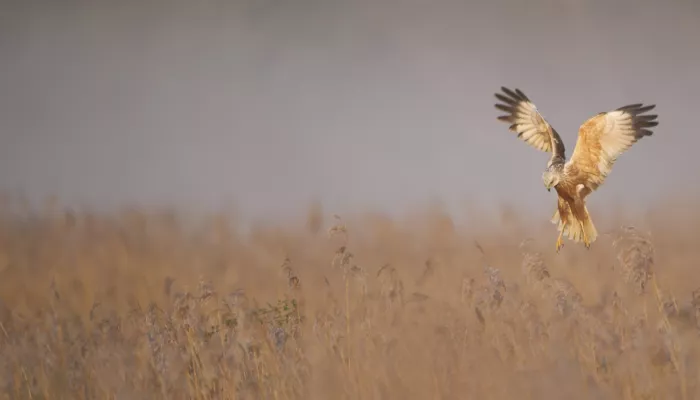| Length | 48-55cm |
| Wingspan | 1.2m |
| Weight | 540-670g |
| Lifespan | 6 years |
The courtship of the marsh harrier is certainly a sight to behold - wheeling and tumbling through the sky, male and female partners lock talons in mid-air. Look out for this rare bird over reedbeds in East Anglia, Somerset and the South East.
About
The marsh harrier nests in large reedbeds where it feeds on frogs, small mammals and birds, such as moorhen and coot. Once very rare, it has recently spread from its stronghold in East Anglia to other parts of the country where reedbed habitat is found. Although the marsh harrier is typically a migrant bird, arriving here to breed in April and leaving in October to winter in Africa, an increasing number are choosing to overwinter in the UK. During the breeding season, males perform amazing courtship displays, wheeling at great heights then diving towards the ground while performing a series of tumbles; sometimes the female will join him and they will lock talons mid-air.
How to identify
The largest of the harriers, the marsh harrier creates a distinctive V-shape in the air by holding its wings up. Females are chocolate-brown with a golden-yellow crown and throat. Males have a brown back, gingery belly, pale head and neck, and long, grey wings with black tips.
Did you know?
In 1971, after years of persecution and habitat loss, only one nesting female remained in the whole country. Today, after decades of conservation effort, there are more than 500 pairs in the UK.

